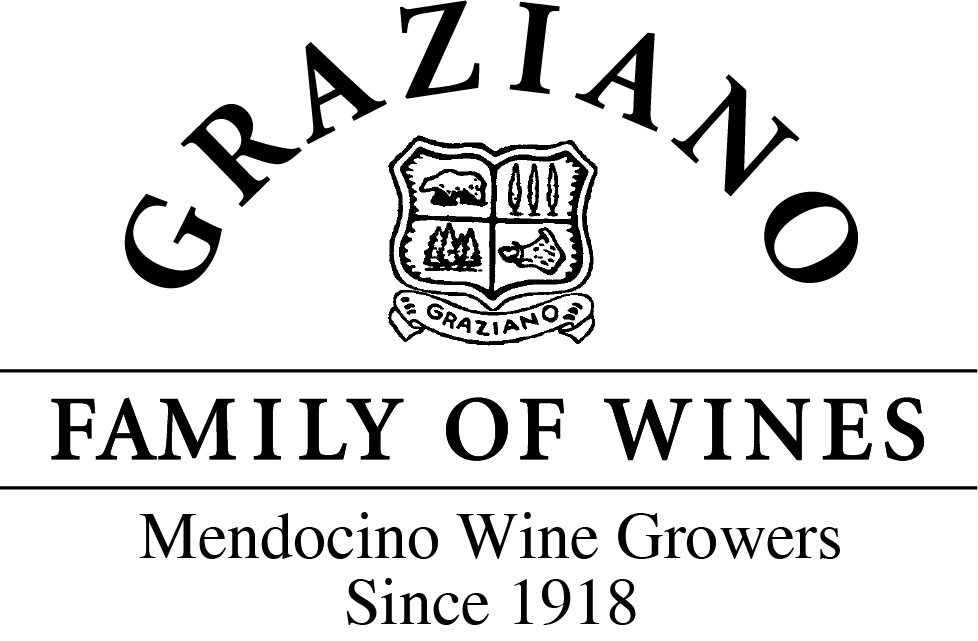A Sparkling Future, Retrospective
Twelve years ago, I wrote a story for the wine club newsletter, “A Sparkling Future” about our venture into the sparkling wine business. As they say, “what a difference a day makes.” Well, how about 12 years? The article went like this:
“How many times in this business do you have to tell yourself that you would never ‘do that’ because it makes no financial sense? Well apparently, not enough. This year we have started one of the biggest black holes of all wine investments; making sparkling wine. My wife Trudi and I both love sparkling wine, especially Champagne, but with its expensive price tag we cannot afford to drink it very often. This is one of the reasons we decided to try our hand at making sparkling wine. As usual to make my life as complicated as possible I am producing not one sparkling wine, but three. Only several hundred cases of each wine will be produced: a Brut, made from Chardonnay, Pinot Blanc and Pinot Noir, a Blanc de Blanc made from Chardonnay and Pinot Blanc, and a Brut Rose made from Pinot Noir and Chardonnay. All the wines will be produced under the Saint Gregory label because of their Burgundian heritage. There are several aspects that will make these wines unique compared to many their California counterparts. The wines are 100% barrel fermented and aged sur-lie in neutral French Burgundy barrels for about 4 months without the use of malo-lactic fermentation. This method is rarely used for California sparkling wines and only for the most expensive wines in Champagne, France such as Krug. After the secondary fermentation in the bottle the wines will be aged in the bottle (or tirage) for as long as 3 to 4 years, again unusual for California sparkling wines. The final technique that will make our sparkling wine different is the use of Pinot Blanc. Pinot Blanc is not used in Champagne France or California but is an important variety used in some of the very best Italian sparkling wines that hale from the Franciacorta region in northwestern Italy. As far as the grapes go, the Chardonnay was grown by John Mcmenomey, the Pinot Noir by Jim Scott of Naughty Boy Vineyards, and the Pinot Blanc by us in our Nube Bianco Vineyard. Wish us the best of luck and most of all, patience.”
I can tell you one thing for sure, all of us involved in this project sure learned a lot. One thing we learned is, for all the money we spent during this time, I could have bought pallets of some of the most expensive and greatest Champagnes produced such as Krug and Roederer Cristal. I can also tell you then that I honestly believe that we produced some of the best and most unique sparkling wines in America. Even for what we are charging I’m sure we are not making much money. Again, the good news is we are making ourselves and our consumers happy and selling out of all the wine, so we get the chance to make more.
Another thing that we’ve done different is leaving our sparkling wines in tirage for 8-10 years, which is very unusual in America and is a very expensive proposition indeed! This technique produces an extremely complex, rich, and creamy wines because during this time the bubbles become smaller and more refined. To be honest, most sparkling wines made in America do not have the structure to withstand the extreme ageing we give our wines. Their pH’s are too high and their acidities are too low. We achieve this balance by growing our grapes in a very special climate and by using some special wine making techniques. Potter Valley is a high elevation valley with warm days and very cool nights. Also, our very cold spring weather keeps our grapevine buds in dormancy for several weeks later compared to Napa and Sonoma. We harvest our sparkling wine grapes weeks, sometime a month later than our neighbors to the south. Sometimes we harvest later than even Champagne, so our grapes ripen during the shorter cooler days and longer nights of mid-September. The climate also produces wines rich in anthocyanins and much more tartaric acid than malic acid, keeping the acidity bright and crisp. The good news is that this helps our wines age, the bad news is it demands more aging time. Another thing we have learned is that the long tirage time has also given our wines much more longevity, something we always have enjoyed about all our wines. Remember, the longer the wines are aged on the yeast and/or in the barrel before bottling, the more they become somewhat prematurely oxidized, so they live longer in the bottle environment. In the later part of our production, we have used grapes only from our vineyard and are embracing varieties that are not usually used in Champagne, such as Arneis, Pinot Gris and Pinot Blanc (although legally Pinot Blanc and Pinot Gris can be used in Champagne). This year for the first time since 2014, we crushed several sparkling cuvees from Chardonnay, Pinot Gris, and Pinot Noir all grown in Potter Valley. All we have left to do now is to be patient for them to age so we can enjoy them in the distant future. We greatly appreciate and applaud all of you out there who have enjoyed this sparkling wine adventure with us and we look forward to releasing several more wines from our first batch of 12 different wines from 5 different vintages.
Greg Graziano
